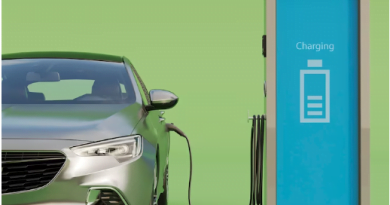How to Control the Frequency of a Hydroelectric Power Station
How to Control the Frequency of a Hydroelectric Power Station
Introduction
- Definition of frequency control
- Importance of frequency control in hydroelectric power stations
Frequency Control Mechanisms
- Overview of frequency control mechanisms
- Primary frequency control
- Secondary frequency control
- Tertiary frequency control
Frequency Control in Hydroelectric Power Stations
- Overview of hydroelectric power stations
- Frequency control in hydroelectric power stations
- Advantages of hydroelectric power stations in frequency control
Factors Affecting Frequency Control in Hydroelectric Power Stations
- Summary of factors affecting Frequency control in Hydroelectric Power Stations
- Load changes and their impact on frequency control
- Turbine speed and its effect on frequency control
- Generator speed and its impact on frequency control
Advanced Frequency Control Techniques in Hydroelectric Power Stations
- Overview of advanced frequency control techniques in hydroelectric power stations
- Automatic Generation Control (AGC)
- Load-Frequency Control (LFC)
- Droop Speed Control
Conclusion
Frequency Control of a Hydroelectric Power Station
Hydroelectric power stations are an essential source of renewable energy. They offer several advantages over other forms of energy generation, including their ability to provide reliable and efficient frequency control. In this article, we will explore the mechanisms and factors affecting frequency control in hydroelectric power stations and advanced techniques such as Automatic Generation Control (AGC), Load-Frequency Control (LFC), and droop speed control.
Introduction
Frequency control is maintaining a stable electrical grid by balancing the supply and demand of electricity. In hydroelectric power stations, this is achieved by regulating the speed at which water flows through the turbines. By controlling the flow rate, we can ensure that the generator produces electricity constantly.
Frequency control is an essential component of any electrical grid. Without it, fluctuations in supply and demand could cause blackouts or damage to electrical equipment. Hydroelectric power stations are particularly well-suited for providing reliable and efficient frequency control due to their ability to adjust the flow rate of water through the turbines quickly.
Frequency Control Mechanisms
Three main mechanisms for controlling frequency are primary, secondary, and tertiary. Direct frequency control is the first line of defense against changes in supply or demand. It involves adjusting the output of generators to match changes in load within seconds.
Secondary frequency control is used to restore grid stability after primary frequency control has been exhausted. It involves adjusting the output of generators over minutes to hours.
Tertiary frequency control maintains long-term stability by adjusting the output of generators over days or weeks.
Frequency Control in Hydroelectric Power Stations
Hydroelectric power stations are uniquely suited for providing reliable and efficient frequency control due to their ability to adjust the flow rate of water through the turbines quickly. By controlling the flow rate, we can ensure that the generator produces electricity constantly.
In addition to providing reliable and efficient frequency control, hydroelectric power stations offer several other advantages over other forms of energy generation. For example, they produce no greenhouse gas emissions or air pollution, have a long lifespan, and can be used for both large-scale and small-scale applications.
Factors Affecting Frequency Control in Hydroelectric Power Stations
Several factors can affect the ability of hydroelectric power stations to provide reliable and efficient frequency control. Load changes are one such factor. When there is a sudden increase or decrease in demand for electricity, it can cause fluctuations in grid frequency.
Turbine speed is another factor that can affect frequency control. If the turbine speed is too high or too low, it can cause fluctuations in grid frequency.
Generator speed is also an essential factor to consider regarding frequency control. If the generator speed is too high or too low, it can cause fluctuations in grid frequency.
Advanced Frequency Control Techniques in Hydroelectric Power Stations
Several advanced techniques can be used to improve the efficiency and reliability of frequency control in hydroelectric power stations. One such technique is Automatic Generation Control (AGC). AGC uses feedback from sensors throughout the grid to adjust generator output based on changes in load.
Load-Frequency Control (LFC) is another technique that can be used to improve the efficiency and reliability of frequency control. LFC involves adjusting generator output based on changes in load over minutes to hours.
Droop speed control is a third technique that can be used to improve the efficiency and reliability of frequency control. Droop speed control involves adjusting generator output based on changes.
Keeping the Lights On How Hydro Plants Balance Supply and Demand
Imagine if the electricity in your home or office suddenly started flickering on and off. One moment, your lights gleam brightly; the next, you’re sitting in darkness! Then, imagine your appliances and devices surging with power one minute and shutting off the next. This chaotic imbalance could quickly damage and disrupt homes, businesses, and infrastructure.
Maintaining a stable flow of electricity requires precisely balancing power supply and demand every second. This is where hydroelectric plants shine. With their unique ability to rapidly adjust output, hydro facilities provide the essential grid balancing services that brighten your lights!
Why Frequency Control Matters
The electricity in your wall outlet alternates at 60 cycles per second, or 60 Hertz (Hz). This consistent frequency is crucial for properly operating motors, digital clocks, and all electrical equipment.
If the balance of supply and demand falters, the grid frequency fluctuates. Deviations of even 0.5 Hz can lead to equipment damage and blackouts. By regulating the flow of water to their turbines, hydro plants can turn their massive generators up or down quickly to keep grid frequency steady at 60 Hz. It’s like having a giant bathtub stopper you can open or close as needed to balance the water inflow and outflow!
Rapid Response Stabilizes the Grid
There are three stages to balancing electricity supply and demand:
Primary Control acts within seconds of an imbalance, quickly adjusting generator output to stabilize grid frequency. Hydro turbines have the quickest response times to compensate for load changes.
Secondary Control returns system frequency to its setpoint over minutes by adjusting generator output. Hydro plants participate here, too.
Tertiary Control restores the ideal dispatch of generators over hours and days by adjusting hydro facility schedules and reservoir levels.
Hydro plants provide crucial inertia and flexibility through each stage to maintain stability. Their quick reaction time allows slower-responding power plants to adjust their output if needed.
Why Hydro Is King for Frequency Control
Hydroelectric generators have physical properties that make them exceptionally responsive for grid balancing:
- Hydro turbines can quickly accelerate from zero to full power with no boiling or combustion. Going from off to on across a hydro dam takes mere seconds!
- The huge rotating mass of hydro generators provides inertia that resists changes in grid frequency. Their kinetic energy helps stabilize the system.
- Hydro facilities can rapidly increase or decrease water flow with their storage reservoirs and spillways. This allows real-time adjustment of power output.
- Computerized speed governors enable precise control over hydro turbine speed and output. Sensors detect load changes and instantly adjust.
Challenges of Maintaining Balance
While hydro plants are masters of frequency control, fluctuating conditions on the grid can make their job difficult:
- Varying electricity demand from hour to hour and season to season must be met with corresponding generator output adjustments.
- Intermittent renewable sources like solar and wind lead to more significant net load changes that hydro plants must compensate for.
- Equipment failures anywhere on the grid can cause sudden losses of supply that need rapid response.
- Reservoir levels that are too high or low reduce available water for power generation flexibility.
New Technology and Techniques
Advanced technologies are enabling hydro plants to balance the grid with greater speed and precision:
- Automatic Generation Control (AGC) coordinates the output of multiple generators using grid data, economic dispatch models, and turbine control capabilities. This optimizes efficiency and reliability.
- Load-Frequency Control (LFC) enhances the coordination of hydro facilities, calculating optimal generation based on load changes over minutes to hours and communicating appropriate setpoints.
- High-tech turbine designs allow faster gate opening and closing to gain seconds of response time. Efficiency gains also increase balancing capabilities.
Keeping Our Lights Shining Bright
The complex dance of matching electricity supply and demand happens behind the scenes. When done right, it leads to the stable, reliable grid power we rely on for everyday life. With new tools and technologies, hydroelectric facilities continue to provide the essential grid balancing that keeps our lights shining bright!
Conclusion
Hydroelectric power stations are an essential source of renewable energy. They offer several advantages over other forms of energy generation, including their ability to provide reliable and efficient frequency control. By understanding the mechanisms and factors affecting frequency control and advanced techniques such as AGC, LFC, and droop speed control, we can ensure that hydroelectric power stations continue to play a vital role in meeting our energy needs.
FAQs
How does hydroelectric frequency control work?
By quickly adjusting the flow of water to their turbines, hydro plants can rapidly turn generators up or down to keep grid frequency balanced at 60 Hz as electricity supply and demand fluctuate.
Why is frequency control important?
Maintaining steady grid frequency prevents damage to equipment and avoids blackouts. Grid stability depends on precise generator output balancing via primary, secondary, and tertiary frequency control.
How fast can hydro plants adjust output?
Hydroelectric generators can go from zero to full power in seconds by opening dam gates. Their swift response makes them ideal for primary frequency control.
What grid conditions make frequency control harder?
Varying loads, intermittent renewables, equipment failures, and limited hydro reservoir levels make it more challenging for hydro plants to balance grid frequency.
What new technologies are improving hydro frequency control?
Modern enhancements like Automatic Generation Control, Load-Frequency Control systems, and high-tech turbine designs enable faster, more optimized grid balancing by hydro facilities.
What is frequency control?
Frequency control is maintaining a stable electrical grid by balancing the supply and demand of electricity.
What are the three main mechanisms for controlling frequency?
Primary, secondary, and tertiary are the three main mechanisms for controlling frequency.
What is Automatic Generation Control (AGC)?
Automatic Generation Control (AGC) is an advanced technique used to improve the efficiency and reliability of frequency control in hydroelectric power stations. AGC uses feedback from sensors throughout the grid to adjust generator output based on changes in load.
What is Load-Frequency Control (LFC)?
Load-Frequency Control (LFC) is another technique that can be used to improve the efficiency and reliability of frequency control. LFC involves adjusting generator output based on changes in load over minutes to hours.
What is Droop Speed Control?
Droop speed control is a third technique that can be used to improve the efficiency and reliability of frequency control. Droop speed control involves adjusting generator output based on changes in grid frequency.




